5 Free Tools for successful Strategic Planning

Strytegy
November 29, 2021
5 simple tools you can use to create a successful strategic plan for your business.

In Strategic Planning, you reflect about the market scenario, define goals and create a concrete action plan for your company. It is a process that helps you translate your essence (Mission, Vision and Values) into executable plans your team can implement.
It is not always easy to exercise this future vision and make a connection between the abstract and the concrete. But there are some methodologies and common business practices that, when combined, can help you through this journey. We gathered here a simple step by step guide that shows you how to create a strategic plan taking advantage of these powerful tools.
It is very important that you involve your team during this whole process. In Strytegy, we offer you templates that can be used in each step to facilitate the conversation with your teammates. You can access the templates 100% by creating an account here.
Now let’s dive into the strategic planning process.
Step 0 - Mission, Vision and Values
As we have said before, your strategic plan will translate your essence into goals and executable plans. So, before you start planning, you need to figure out what this essence is.
If you already defined these concepts, you can revisit them with your team. Make alterations, if necessary, but remember that these are the guiding principles of your company, and shouldn’t change all that often.
If you have not defined them, take some time to do it before starting the planning process. To do that, you should answer three questions: 1) Mission: What is your company’s purpose for existing?; 2) Vision: What does your company want to accomplish in the long run?; and 3) Values: What are your company’s guiding principles?
The following steps will help you transform this essence into an action plan that all your teammates will be able to understand and execute.
Step 1 - Retrospective
Before you start looking into the future, reflect about what has passed. Revisit all your main KPI’s, observe which projects were successful or not, take a detailed look at your organization and gather the crew to talk about it.
We suggest you consolidate all this information in a simple board, where you write all the positive and negative points of the year, and then think about ways to improve.
This simple exercise will help you clear your mind to focus on the future and avoid making the same mistakes of the past.
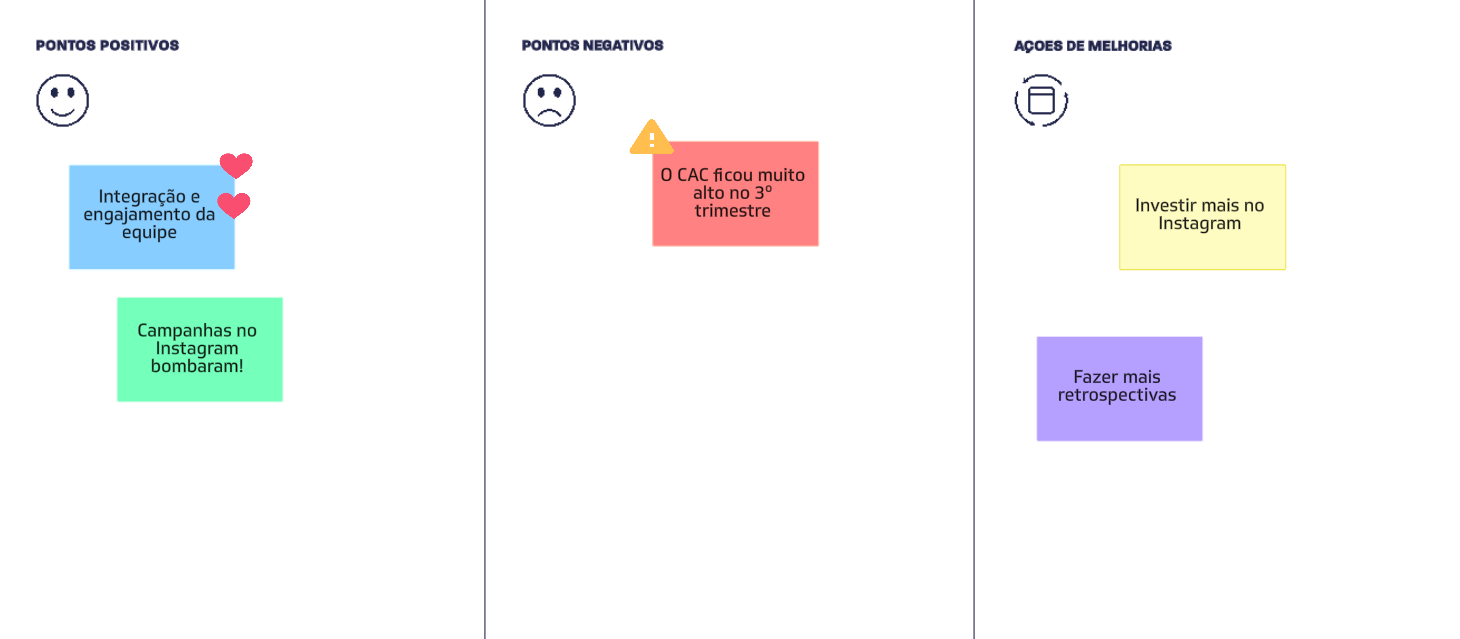
Step 2 - Environment Analysis
Your company is not in a bubble. It is part of a complex scenario, influenced by macroeconomic factors, competitors, consumer tendencies, etc. Therefore, it doesn’t make sense to start planning before you understand what is happening around you.
The best tool to help you with that is SWOT Analysis, in which you will list, in a very concise manner, what are your company’s Strengths and Weaknesses, and what are the Opportunities and Threats you identify in the market. You can even go a little further and try out TOWS, which is a methodology where you cross analyse all four quadrants of the SWOT matrix and create concrete strategies for your business.
Know more about SWOT and TOWS Analysis in this article we prepared for you.
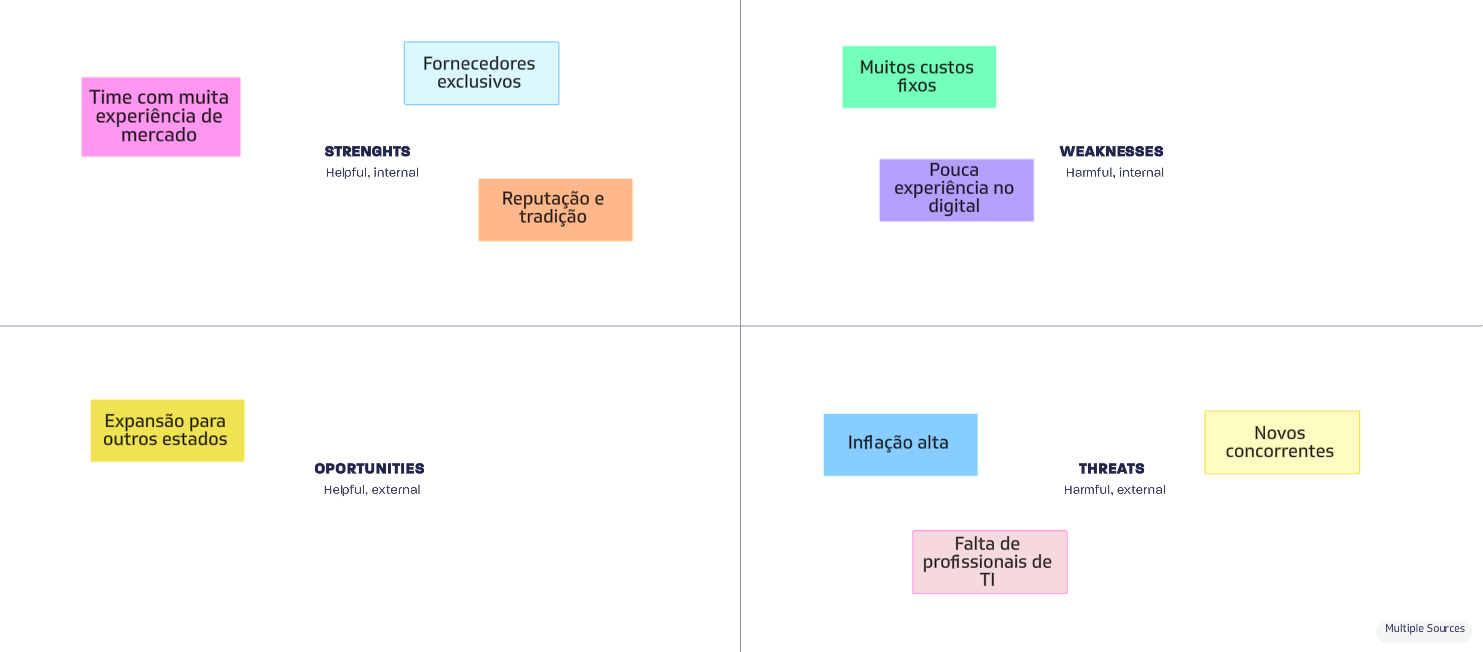
Step 3 - Goals and Measurements
Finally, it is time to actually think about the future. The OKR (Objective and Key Results) method is the perfect tool to create a bridge between the abstract and the concrete, and translate you essence into measurable goals.
The method is quite simple. With your Mission and Vision in mind, start by defining your main objectives for the next period. Usually, OKRs are done every three months, to avoid them becoming outdated due to rapid changes in the market or the company.
Objectives should be qualitative, and describe in a very concise way what your business wishes to accomplish. For each objective, define something between 2 to 5 Key Results. These results should be quantitative and measurable, and allow you to evaluate and measure whether your goal is being met.
You can write them like this: I will… (Objective)... measured by… (Key Results).
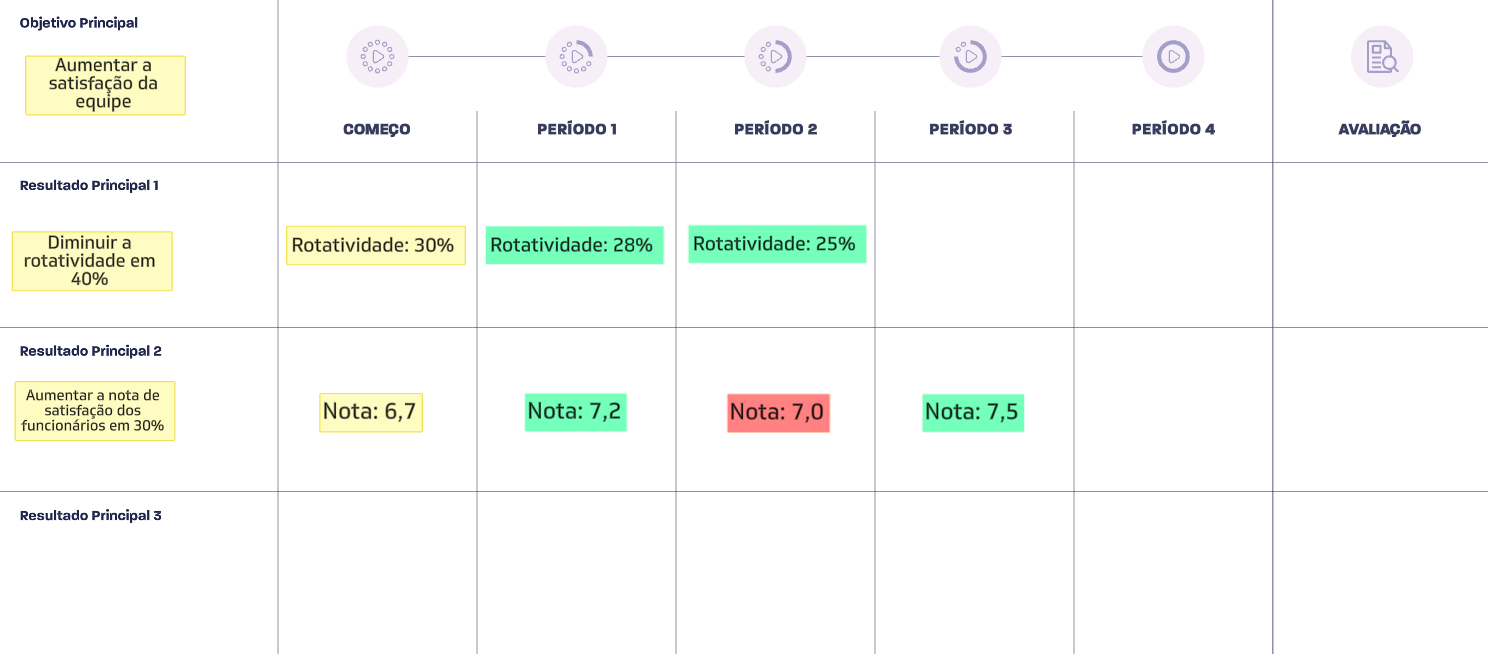
Depending on the size of the business, there can be multiple levels of OKRs. Sometimes, companies have an organizational OKR, and each department creates their own system of Objectives and Key Results. It doesn’t matter how many levels you create, as long as they are all aligned to the company’s main objectives.
Step 4 - Creating action plans
Many times, strategic plans go as far as OKRs. The general direction has been set, so now it is up to every team to define how to get there. However, this very step can be one of the most challenging, because it is time to create concrete action plans, delegate tasks and decide what should be done first.
For that reason, we decided to include here a couple of tools that can help with this part of the process, and can really make a difference when it comes to putting your plans into action.
The first one is called 5W2H. This method orients you to list all initiative you need to implement and, for each one, answer these 7 questions:
What: What is the initiative? What are we going to do?
Why: Why are we doing this?
When: When will this take place? What is the deadline?
Where: Where will this take place?
Who: Who will be the person responsible for this initiative’s success?
How: How will it be done?
How much: How much does this initiative cost us?
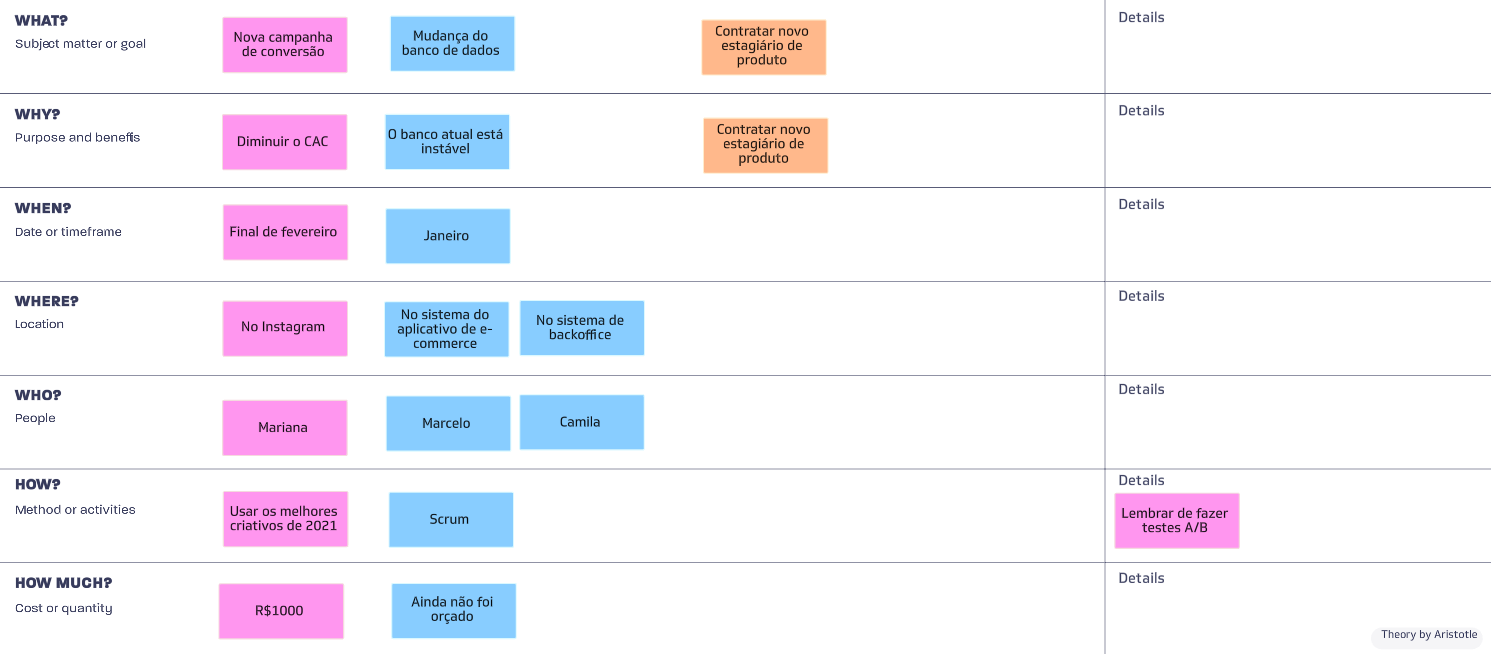
This can help you clearly identify who is responsible for what, organize deadlines and even plan your budget.
The second methodology we want to present here is the Roadmap. Usually used in project management or product development, Roampa is a tool for organizing a team’s main deliveries in time. Far from being a rigid and exhaustive timeline, it helps the team understand the most important milestones they need to achieve and organize their time to be able to accomplish all they have planned.
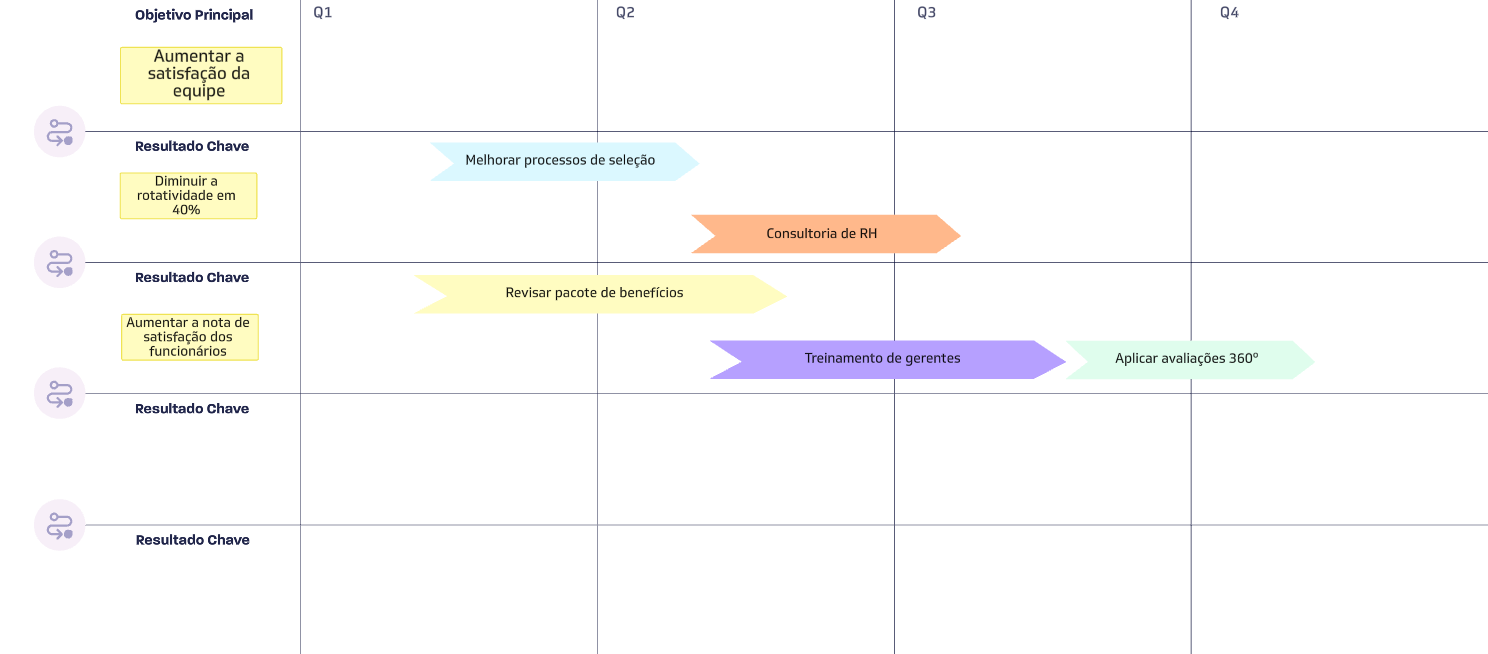
No step by step guide will be perfect for a company. The idea here is to offer you a good starting point, and useful tools that can help you through this process. With this foundation, you can create your own adaptations.
As we said before, we are offering you free templates for each of the steps listed above and you can access them in Strytegy. All you have to do is create your account, invite your teammates and start planning!
